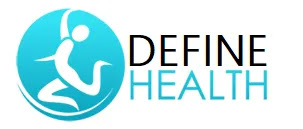How to Do Fish Pose | Matsyasana | Matsyasana Benefits
Matsyasana
Yoga has a variety of asanas that
can help with a variety of health conditions and problems. Matsyasana,
sometimes known as the fish pose, is one such yoga asana. It gets its name from
the Sanskrit words Matsya, which means “fish,” and asana, which means “position.”
The position is similar to that of
a fish. This asana helps to relieve shoulder strain while also opening up the
chest entirely. The asana strengthens the heart and regulates hormones.
Headstand and Shoulderstand have a counterpose in Matsyasana. The asana is a
stress reliever that also helps with back and shoulder discomfort.
Why Matsyasana?
This yoga asana is used to help
people become more focused and persistent. This asana is beneficial whenever a
person is unsure or frightened as a result of a problem. Legs should be
grounded to the point where they feel solidly and thoroughly attached to the
earth.
This aids in the elevation of the
chest area as well as the deepening of the breath. This yoga stance will
strengthen your back and stomach like never before. This asana, like all back
bending yoga positions, helps to lighten the mood and relieve anxiety.
How To Perform Matsyasana steps
- Lay on your back with your legs stretched out in front of you. Knees slightly bent.
- Inhale and lift your buttocks to place your hands beneath them, palms facing down. Place your buttocks on the backs of your hands and lower them. Straighten your knees now.
- Throughout the practice, keep the elbows and forearms firmly close to the torso.
- To elevate the body, inhale and press the elbows and forearms against the floor.
- As much as you can comfortably lift your chest and arch your spine. Place your head’s crown on the floor. Ensure that you're not exerting any pressure on your head.
- Close your eyes and relax your entire body. Slowly and deeply inhale and exhale. For a few seconds, hold the ultimate position.
- Throughout, keep your legs engaged and your toes moving.
- To come out, press firmly into your forearms and lift your head off the floor. Then, with your upper body on the mat, release it.
Padma matsyasana
- In Padmasana, take long, deep breaths to relax the body.
- Move the body backward slowly, carefully placing the right elbow and forearm on the floor. Carry on with the left arm in the same manner.
- Slowly lower your body, using your elbows and forearms to support you, until the crown of your head is on the floor.
- As much as you can, arch your back (without straining). With your hands, hold the feet.
- Place your head on the ground and make sure it’s comfortable. Don’t put any weight on it.
- Close your eyes and relax your entire body. Slowly and deeply inhale and exhale. For a few seconds, hold the final stance.
- To release the posture, exhale and reverse the movements one by one. Take a few moments to relax in padmasana.
Precautions for Matsyasana (Fish Pose)
- Slowly and carefully lower and elevate the body into the ultimate position, using the elbows for support. If you rush this moment, you could potentially injure your spine or neck.
- If you have a current health problem, talk to your doctor or physician before starting a yoga routine, and only do so in the presence of a qualified yoga instructor.
- People who have a migraine, a back or neck injury, gastric ulcers, heart illness, hernia, or high or low blood pressure should avoid doing Matsyasana.
Benefits of the Matsyasana / Fish Pose
Among the many fantastic benefits of Matsyasana, the following are a few of the best:
This yoga asana helps in the
absorption of nutrients. Moreover, It also assists in expanding the chest and
neck while releasing tension in these areas.
Matsyasana helps in the reduction
of all respiratory issues because it teaches a person how to breathe properly
with consistent practice.
strengthens and tones the pituitary
gland, pineal gland (third eye), and parathyroid gland.
It aids in the proper stretching
and toning of the back region. As a result of practicing this yoga asana every
day, the back is alleviated of all strain.
As a result of the daily practice
of this yoga asana, the muscles of the upper back and neck region get stronger.
consistent practice of this yoga
asana, the hip flexor muscles located between the ribs obtain a good stretch.
All of the muscles in the front of
the neck and abdomen are woken with the help of this yoga asana.
The digestive tract and throat
receive a wonderful massage from the consistent practice of this asana.
This yoga asana tremendously aids
in the improvement of a person’s right posture.
This asana can aid in the
treatment of the following diseases:
- Constipation
- Anxiety
- Tiredness
- Backache
- Menstrual problems
- Respiratory problems
Beginner Tip
Don’t bend your back more than
it’s capable of.
Make sure the weight isn’t
centered too much on the head. The neck may crunch as a result of this.
You can begin by standing with
your legs straight or bent at the knees.
Wrap Up
Keep yourself healthy and powerful
to get the most out of life.
In the comments section below, let
us know what you think about this post.
Thank you for dedicating time to
read this.Visit again.



